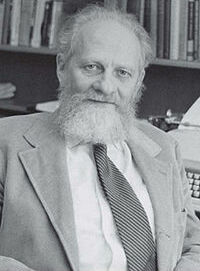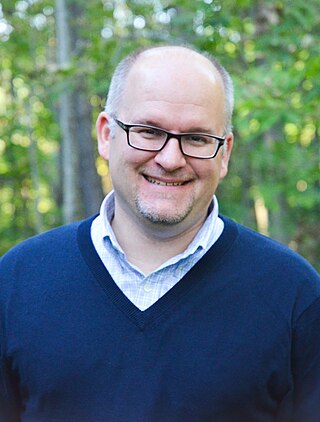
Social status is the relative level of social value a person is considered to possess. Such social value includes respect, honor, assumed competence, and deference. On one hand, social scientists view status as a "reward" for group members who treat others well and take initiative. This is one explanation for its apparent cross-cultural universality. On the other hand, while people with higher status experience a litany of benefits--such as greater health, admiration, resources, influence, and freedom--those with lower status experience poorer outcomes across all of those metrics.

The term significant other (SO) has different uses in psychology and colloquial language. Colloquially, "significant other" is used as a gender-neutral term for a person's partner in an intimate relationship without disclosing or presuming anything about marital status, relationship status, gender identity, or sexual orientation. Synonyms with similar properties include sweetheart, other half, better half, spouse, domestic partner, lover, soulmate, and life partner.

Social class in the United States refers to the idea of grouping Americans by some measure of social status, typically by economic status. However, it could also refer to social status and/or location. The idea that American society can be divided into social classes is disputed, and there are many competing class systems.

Social mobility is the movement of individuals, families, households or other categories of people within or between social strata in a society. It is a change in social status relative to one's current social location within a given society. This movement occurs between layers or tiers in an open system of social stratification. Open stratification systems are those in which at least some value is given to achieved status characteristics in a society. The movement can be in a downward or upward direction. Markers for social mobility such as education and class, are used to predict, discuss and learn more about an individual or a group's mobility in society.

Peter Michael Blau was an American sociologist and theorist. Born in Vienna, Austria, he immigrated to the United States in 1939. He completed his PhD doctoral thesis with Robert K. Merton at Columbia University in 1952, laying an early theory for the dynamics of bureaucracy. The next year, he was offered a professorship at the University of Chicago, where he taught from 1953 to 1970. He also taught as Pitt Professor at Cambridge University in Great Britain, as a senior fellow at King's College, and as a Distinguished Honorary professor at Tianjin Academy of Social Sciences which he helped to establish. In 1970 he returned to Columbia University, where he was awarded the lifetime position of Professor Emeritus. From 1988 to 2000 he taught as the Robert Broughton Distinguished Research Professor at University of North Carolina, Chapel Hill in the same department as his wife, Judith Blau, while continuing to commute to New York to meet with graduate students and colleagues.
Class analysis is research in sociology, politics and economics from the point of view of the stratification of the society into dynamic classes. It implies that there is no universal or uniform social outlook, rather that there are fundamental conflicts that exist inherent to how society is currently organized.
In the field of sociology, cultural capital comprises the social assets of a person that promote social mobility in a stratified society. Cultural capital functions as a social relation within an economy of practices, and includes the accumulated cultural knowledge that confers social status and power; thus cultural capital comprises the material and symbolic goods, without distinction, that society considers rare and worth seeking. There are three types of cultural capital: (i) embodied capital, (ii) objectified capital, and (iii) institutionalised capital.
Otis Dudley Duncan was "the most important quantitative sociologist in the world in the latter half of the 20th century", according to sociologist Leo Goodman. His book The American Occupational Structure, which received the American Sociological Association's Sorokin Award, documented how parents transmit their societal status to their children. Duncan compiled his thoughts on the major issues of the field into Notes on Social Measurement, which he considered his greatest work.
Sociologists use the concept of occupational prestige to measure the relative social-class positions people may achieve by practicing a given occupation. Occupational prestige results from the consensual rating of a job - based on the belief of that job's worthiness. The term prestige itself refers to the admiration and respect that a particular occupation holds in a society. Occupational prestige is prestige independent of particular individuals who occupy a job. Sociologists have identified prestige rankings for more than 700 occupations based on results from a series of national surveys. They have created a scale and then rank given occupations based on survey results.

The sociology of education is the study of how public institutions and individual experiences affect education and its outcomes. It is mostly concerned with the public schooling systems of modern industrial societies, including the expansion of higher, further, adult, and continuing education.

Cultural reproduction, a concept first developed by French sociologist and cultural theorist Pierre Bourdieu, is the mechanisms by which existing cultural forms, values, practices, and shared understandings are transmitted from generation to generation, thereby sustaining the continuity of cultural experience across time. In other words, reproduction, as it is applied to culture, is the process by which aspects of culture are passed on from person to person or from society to society.

The educational attainment of the U.S. population refers to the highest level of education completed. The educational attainment of the U.S. population is similar to that of many other industrialized countries with the vast majority of the population having completed secondary education and a rising number of college graduates that outnumber high school dropouts. As a whole, the population of the United States is spending more years in formal educational programs. As with income, levels differ by race, age, household configuration, and geography.
Status attainment is the process of one attaining one's positions in society, or class. Status attainment is affected by both achieved factors, such as educational attainment, and ascribed factors, such as family income. The theory of status attainment states that one can be mobile, either upwardly or downwardly, in the form of a class system.
Oppositional culture, also known as the "blocked opportunities framework" or the "caste theory of education", is a term most commonly used in studying the sociology of education to explain racial disparities in educational achievement, particularly between white and black Americans. However, the term refers to any subculture's rejection of conformity to prevailing norms and values, not just nonconformity within the educational system. Thus many criminal gangs and religious cults could also be considered oppositional cultures.

William Hamilton Sewell was a United States sociologist and the chancellor of the University of Wisconsin–Madison during the 1967–1968 school year. He is the father of William H. Sewell Jr.
Occupational segregation is the distribution of workers across and within occupations, based upon demographic characteristics, most often gender. Other types of occupational segregation include racial and ethnicity segregation, and sexual orientation segregation. These demographic characteristics often intersect. While a job refers to an actual position in a firm or industry, an occupation represents a group of similar jobs that require similar skill requirements and duties. Many occupations are segregated within themselves because of the differing jobs, but this is difficult to detect in terms of occupational data. Occupational segregation compares different groups and their occupations within the context of the entire labor force. The value or prestige of the jobs are typically not factored into the measurements.
Robert Mason Hauser is an American sociologist. He is the Vilas Research and Samuel F. Stouffer professor of sociology emeritus at the University of Wisconsin–Madison, where he served as director of the Institute for Research on Poverty and the Center for Demography of Health and Aging.
Joseph Woelfel is an American sociologist. Born in Buffalo, New York, Dr. Woelfel is an Emeritus Professor in the Department of Communication at the University at Buffalo, The State University of New York.
Michael Hout is a Professor of Sociology at New York University. His contributions to sociology include using demographic methods to study social change in inequality, religion, and politics. His current work used the General Social Survey (GSS) to estimate the social standing of occupations introduced into the census classification since 1990. He digitized all occupational information in the GSS (1972–2014) and coded it all to the 2010 standard. Other recent projects used the GSS panel to study Americans' changing perceptions of class, religion, and happiness. In 2006, Mike and Claude Fischer published Century of Difference, a book on twentieth-century social and cultural trends in the United States. Other books include Truth about Conservative Christians with Andrew Greeley, Following in Father's Footsteps: Social Mobility in Ireland, and Inequality by Design

Stephen Lawrence Morgan is a Bloomberg Distinguished Professor of Sociology and Education at the Johns Hopkins University School of Arts and Sciences and Johns Hopkins School of Education. A quantitative methodologist, he is known for his contributions to quantitative methods in sociology as applied to research on schools, particularly in models for educational attainment, improving the study of causal relationships, and his empirical research focusing on social inequality and education in the United States.







